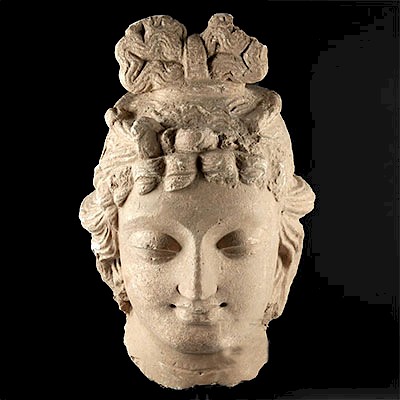Rare / Complete Urartian Bronze Belt
Lot 91
About Seller
Artemis Fine Arts
686 S Taylor Ave, Ste 106
Louisville, CO 80027
United States
Selling antiquities, ancient and ethnographic art online since 1993, Artemis Gallery specializes in Classical Antiquities (Egyptian, Greek, Roman, Near Eastern), Asian, Pre-Columbian, African / Tribal / Oceanographic art. Our extensive inventory includes pottery, stone, metal, wood, glass and textil...Read more
Estimate:
$9,500 - $14,250
Absentee vs Live bid
Two ways to bid:
- Leave a max absentee bid and the platform will bid on your behalf up to your maximum bid during the live auction.
- Bid live during the auction and your bids will be submitted real-time to the auctioneer.
Bid Increments
| Price | Bid Increment |
|---|---|
| $0 | $25 |
| $300 | $50 |
| $1,000 | $100 |
| $2,000 | $250 |
| $5,000 | $500 |
| $10,000 | $1,000 |
| $20,000 | $2,500 |
| $50,000 | $5,000 |
| $100,000 | $10,000 |
| $200,000 | $20,000 |
About Auction
By Artemis Fine Arts
Aug 30, 2018
Set Reminder
2018-08-30 10:00:00
2018-08-30 10:00:00
America/New_York
Bidsquare
Bidsquare : Fine Antiquities / Asian / Ethnographic Art
https://www.bidsquare.com/auctions/artemis-gallery/fine-antiquities-asian-ethnographic-art-3402
Featuring classical antiquities, Asian, ancient and ethnographic art from cultures encompassing the globe, plus fine art. Artemis Fine Arts info@artemisgallery.com
Featuring classical antiquities, Asian, ancient and ethnographic art from cultures encompassing the globe, plus fine art. Artemis Fine Arts info@artemisgallery.com
- Lot Description
Ancient Near East, modern day Eastern Anatolia region of Turkey, Urartu, Urartian, Iron Age III, ca. 7th century BCE. It is incredibly rare to find a complete Urartian belt. This example, made from hammered bronze and decorated in chased low relief/repousse with a central band of repeated curvilinear medallion or shield-like forms - each one framing an otherworldly winged creature or a floral blossom - as well as several animal forms (perhaps horses, gazelles, or ibexes) positioned above and below the medallions. Surrounding this central register are narrow bands comprised of double striations bordering repeated concentric circles. Finally, the belt is punched with regularly spaced perforations that line the upper and lower edges. Size: 47.25" L x 13" in diameter x 4" H (120 cm x 33 cm x 10.2 cm); 9.125" H (23.2 cm) on included custom stand.
The civilization of Urartu was one of several states that arose following the destruction of the Hittite state in approximately 1200 BCE. Others included Tabal, Phrygia, and Lydia - each one possessed its own distinct language, religion, ethnicity, and visual culture. According to the Metropolitan Museum of Art Heilbrunn essay, "In their inscriptions, the Assyrians of Mesopotamia refer to the Urartians as their northern enemies from the eleventh to the seventh centuries B.C. However, the earliest known Urartian written document, a rock inscription at Van (ancient Tushpa), records the earliest reference to the state. There it says that Urartu was ruled by a king named Sarduri (r. ca. 840Three small fissures at upper and lower edges - each one about 1" long or less. Normal denting and surface wear commensurate with age, though most of the decorative/iconographic motifs are still visible. Rich green and russet patina graces the surface, leaving a warm finish attained over the ages.Condition
- Shipping Info
-
All shipping is handled in-house for your convenience. Your invoice from Artemis Gallery will include shipping calculation instructions. If in doubt, please inquire BEFORE bidding for estimated shipping costs for individual items.
-
- Buyer's Premium



 EUR
EUR CAD
CAD AUD
AUD GBP
GBP MXN
MXN HKD
HKD CNY
CNY MYR
MYR SEK
SEK SGD
SGD CHF
CHF THB
THB
















